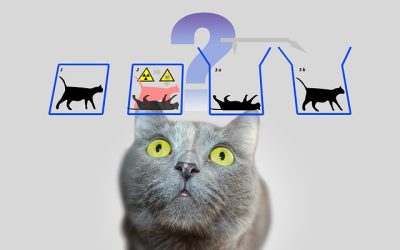Albert Einstein is one of the most famous scientists in history, and his theory of relativity is one of the most important scientific theories ever developed. However, it is also one of the most complex and difficult to understand. In this article, we will attempt to explain Einstein’s theory of relativity in a way that is accessible to people without a scientific background.
The theory of relativity has two parts: special relativity and general relativity. Special relativity deals with the way that time and space are related to each other, while general relativity deals with the way that gravity works.
Special Relativity
Special relativity is based on two key concepts: the constancy of the speed of light and the equivalence of all frames of reference.
The Constancy of the Speed of Light
The first concept of special relativity is the constancy of the speed of light. This means that the speed of light is always the same, no matter how fast you are moving. This is a very strange idea, because it goes against our everyday experience. For example, if you are driving a car at 60 miles per hour and you throw a ball forwards at 10 miles per hour, the ball is moving at 70 miles per hour relative to the ground. However, if you shine a flashlight forwards while you are driving at 60 miles per hour, the light is still moving at the speed of light, not at 60 + the speed of light.
This is because the speed of light is a fundamental constant of the universe. It is always the same, no matter how fast you are moving or where you are in the universe. This means that if you are moving very fast and you shine a flashlight forwards, the light will still be moving at the speed of light relative to you, not at the speed of light plus your speed.
The Equivalence of All Frames of Reference
The second concept of special relativity is the equivalence of all frames of reference. This means that there is no special frame of reference in the universe. All frames of reference are equally valid.
To understand this concept, imagine that you are in a car that is moving at a constant speed on a straight road. If you look out the window, you can see the trees and buildings moving past you. However, if you close your eyes and don’t look out the window, you can’t tell whether you are moving or not.
This is because motion is relative. There is no absolute motion in the universe. You can only talk about motion relative to something else. In the example of the car, you are moving relative to the trees and buildings, but you are not moving relative to the car itself.
The equivalence of all frames of reference means that there is no special frame of reference in the universe. All frames of reference are equally valid. This means that if you are in a spaceship that is moving very fast, you can say that you are stationary and the Earth is moving, and the people on Earth can say that they are stationary and the spaceship is moving. Both frames of reference are equally valid.
The implications of these two concepts are very strange and go against our everyday experience of the world. However, they have been proven experimentally and are fundamental to our understanding of the universe.
One of the most important implications of special relativity is the idea of time dilation. This means that time passes more slowly for objects that are moving very fast relative to objects that are stationary. This is because time and space are not separate things, but are actually two parts of the same thing called spacetime.
To understand time dilation, imagine that you are in a spaceship that is moving very fast relative to the Earth. According to special relativity, time will pass more slowly for you than it does for people on Earth. This means that if you were to travel to a distant star and back at very high speeds, you would age more slowly than your friends and family on Earth.
This has been proven experimentally using atomic clocks that are very accurate. Scientists have put atomic clocks on airplanes and flown them around the world, and they have found that the clocks on the airplanes tick slightly slower than the clocks on the ground. This is because the airplanes are moving very fast relative to the ground.
Another implication of special relativity is the idea of length contraction. This means that objects that are moving very fast relative to an observer will appear to be shorter than they actually are. This is because space and time are not separate things, but are actually two parts of the same thing called spacetime.
To understand length contraction, imagine that you are in a spaceship that is moving very fast relative to the Earth. According to special relativity, objects on the Earth will appear to be shorter than they actually are. This means that if you were to travel to a distant planet and back at very high speeds, the distance you traveled would appear to be shorter than it actually is.
This has also been proven experimentally. Scientists have sent high-energy particles called muons into the Earth’s atmosphere, and they have found that the muons decay much more slowly than they should if they were traveling at their normal speed. This is because the muons are moving so fast that they appear to be shorter than they actually are, which means that they are able to travel further before they decay.
General Relativity
General relativity is based on the idea that gravity is not a force that pulls objects towards each other, but is actually a result of the way that objects warp spacetime.
To understand this idea, imagine that you are standing on the Earth’s surface. According to Newton’s theory of gravity, you are being pulled towards the center of the Earth by a force called gravity. However, according to general relativity, you are not being pulled by a force at all. Instead, the Earth’s mass is warping spacetime around it, and you are following the curve of spacetime towards the center of the Earth.
This idea has been proven experimentally using a phenomenon called gravitational lensing. Gravitational lensing occurs when light from a distant object is bent by the warping of spacetime around a massive object like a galaxy or a black hole.
One of the most famous examples of gravitational lensing is the Einstein cross. The Einstein cross is a pattern of four images of a distant quasar that are arranged in a cross shape around a galaxy in the foreground. The pattern is caused by the warping of spacetime around the galaxy, which bends the light from the quasar and creates multiple images.
Another implication of general relativity is the idea of time dilation in strong gravitational fields. This means that time passes more slowly in strong gravitational fields than it does in weak gravitational fields.
To understand this idea, imagine that you are standing on the surface of a planet that has a very strong gravitational field, like a black hole. According to general relativity, time will pass more slowly for you than it does for someone who is far away from the planet. This means that if you were to travel very close to a black hole and then come back, you would have aged less than someone who stayed far away from the black hole.
This has also been proven experimentally using atomic clocks that are very accurate. Scientists have put atomic clocks on airplanes and flown them at different altitudes, and they have found that the clocks at higher altitudes tick slightly faster than the clocks at lower altitudes. This is because the clocks at higher altitudes are in a weaker gravitational field than the clocks at lower altitudes.
Conclusion
Einstein’s theory of relativity is one of the most important scientific theories ever developed. It has revolutionized our understanding of space, time, and gravity, and has had numerous practical applications. However, it is also one of the most complex and difficult to understand theories. We hope that this article has provided a simplified explanation of Einstein’s theory of relativity that is accessible to people without a scientific background.




0 Comments